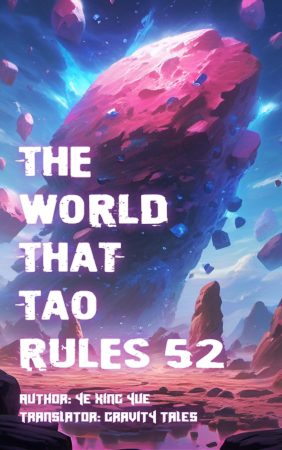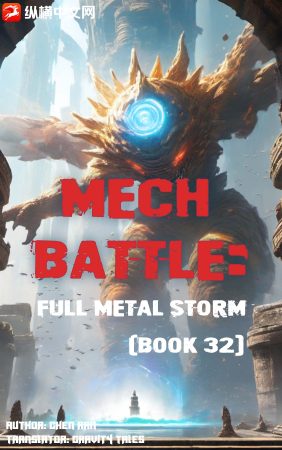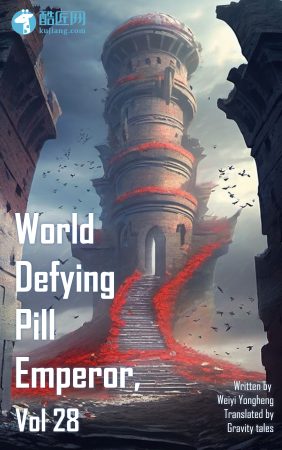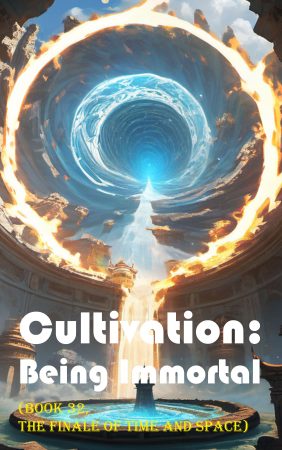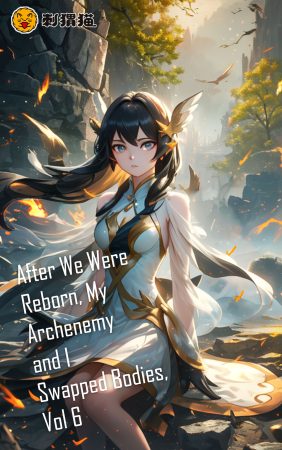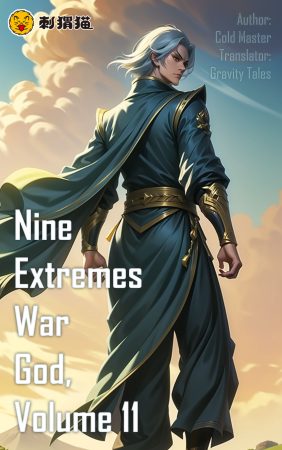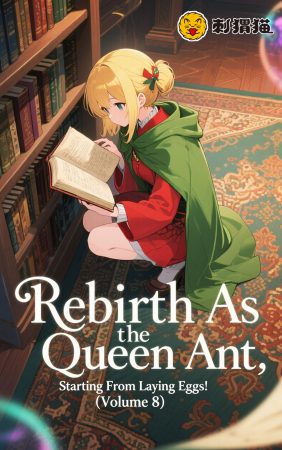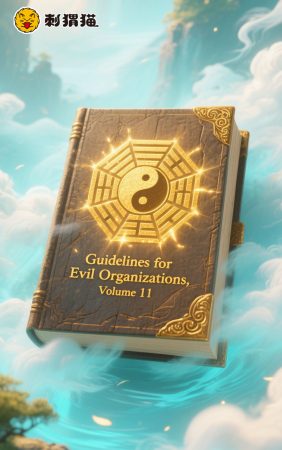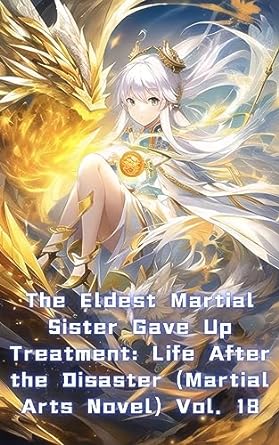Chapter 5
Our Discord Server: https://discord.gg/PazjBDkTmW
You can buy coins here to unlock advanced chapters: https://gravitytales.com/coins-purchase-page/
Chapter 5: Basic Survival
Chu Junguei crawled back into the escape pod, lifted the seat, and pulled out a square box from underneath. The box lid bore the Deep Space Energy logo along with survival markings.
This was a Deep Space Energy star system survival kit, valued for its reliability, stability, and affordability—essential survival equipment aboard most interstellar vessels.
The kit box was made of composite materials, immediately conveying a cheap, rough feel. Chu Junguei opened the kit and examined everything inside. The box contained three packages of compressed food, two bottles of water, two polymer batteries, a scanner, and a multi-function universal matter printer.
Chu Junguei picked up the universal matter printer and gently pressed the activation switch. It automatically extended its base and four printing arms.
The core of the entire survival kit was this universal matter printer, capable of printing various equipment according to pre-stored blueprints using standardized processed materials. This simple portable version required only a polymer battery for power. If no battery could be found, other energy sources could substitute.
One could say that having a matter printer was equivalent to possessing a miniature portable factory.
However, looking at the blueprint list on the printer’s screen, Chu Junguei shook his head helplessly. Though the listed blueprints were numerous, unfortunately they were all the most basic equipment, with most being severely outdated models. For instance, the primary defensive weapon was just a pistol—and a gunpowder-powered one at that. During his time at the base, he had never even heard of such ancient technology, let alone seen it.
But this portable printer had to consider both versatility and cost—indeed, cost was the primary consideration—so the materials it could process were quite limited, naturally preventing it from printing any advanced equipment.
Chu Junguei browsed through the list and decided on several pieces of equipment to manufacture. First, he needed a defensive weapon, followed by necessary survival tools. A multi-function combat dagger could satisfy most requirements.
Next, he would still need a pistol and an arm shield. The Close-Combat Firearms Fighting Technique version 0.1a remained stored in his memory and had passed testing, creating muscle memory. With events unfolding so suddenly and the base destroyed, those researchers naturally had no time to purge his memory.
According to interstellar survival knowledge in his memory, Chu Junguei felt that with a gun and shield in hand, plus a serrated short blade, he could basically dominate most primitive ecological planets. Except for creatures of exceptionally large size or vast numbers of pack animals, ordinary predators posed no threat.
He examined the interior of the escape pod and rummaged around, finding another small box containing several cylindrical rods. Most were basic metals like iron and copper, plus two carbon rods.
These cylindrical rods were raw materials specifically designed for universal matter printers.
With basic materials available, he still couldn’t make a gun. He would need to create gunpowder first, then manufacture ammunition, and finally the pistol. A gun without bullets was worse than a fire poker. However, the P1911 in the stored blueprints looked square and solid, full of retro feeling—he wondered which ancient weapon it was paying homage to.
It seemed he needed to collect some materials while exploring the surrounding environment. The escape pod was completely destroyed, and he had no idea how long he would be stuck on this damned planet.
If this planet truly had no intelligent life and wasn’t listed in the catalog of discovered worlds, then Chu Junguei would need to prepare to build an interstellar spacecraft from scratch with his own hands.
Fortunately, his previous existence as a test subject meant he hadn’t formed clear concepts of time and life, so he didn’t seriously consider how much time completing this task would require.
Chu Junguei moved all usable items from the escape pod outside, used the seat back to construct a simple workbench, placed the printer on it securely, then inserted a polymer battery and selected the multi-function combat dagger from the manufacturing blueprints.
The printer’s four arms moved into position, with top covers sliding open to reveal feed ports.
Seeing the four parallel feed ports, Chu Junguei couldn’t help but curse internally. With just these few feed ports, how much material could be processed at once? The equipment that could be printed with this amount of material would naturally all be small-scale gear—even slightly larger small equipment couldn’t be handled. This Deep Space Energy company really went all out to save costs.
A combat dagger didn’t require four materials. Chu Junguei took an iron rod and added a carbon rod, inserted them into the feed ports, and activated printing.
The four printing arms each emitted light beams, layering materials gradually. Before long, a combat dagger had taken shape.
Chu Junguei picked up the dagger, tested the blade’s flexibility, checked its strength, then could only shake his head. A dagger made from ordinary metals using printing methods naturally wouldn’t have exceptional quality.
He consoled himself: ‘As long as it’s harder than my fingernails and teeth.’
With the dagger, he at least had a basic tool. Chu Junguei then used three metal rods and the remaining carbon rod to create an arm shield. This shield only had basic defensive functions, but its edges were sharp—with a wooden handle inserted, it could serve as an axe or shovel.
After completing these two pieces of equipment, little material remained. He picked up the scanner to examine it. This was a device somewhat resembling a single-lens combat monocle—a half-frame lens that actually functioned as a display screen. The emission port on the frame could project scanning beams capable of identifying most common substances.
Chu Junguei put on the scanner, tested it briefly, then tossed it aside. Since this scanner could be included in the kit, its performance was naturally unremarkable. It could indeed scan most common substances, but the problem was that ordinary people could identify common substances with their eyes. Moreover, Chu Junguei’s vision had built-in scanning functions far superior to this scanner.
However, after thinking it over, he retrieved the scanner and kept it with him.
He didn’t want anyone to discover he was different from ordinary people, so carrying the scanner was better. Though he couldn’t use its scanning function, at least it could block wind during harsh weather.
After organizing everything, Chu Junguei first searched around the escape pod, collecting scattered metal fragments. Once he built a refinery, he could reprocess these fragments into raw materials. The escape pod was constructed from high-grade interstellar alloys. The materials used in such alloys weren’t available on every planet, and even when available, some components were extremely troublesome to extract.
The escape pod had carved a furrow over a hundred meters long in the ground. Chu Junguei simply followed this groove, slowly exploring toward the nearby forest.
As he walked, Chu Junguei scanned the rocks and plants he encountered along the way.
At the forest’s edge, the ground supported low vegetation and weeds, primarily composed of carbon with considerably high sulfur content. Both elements had wide applications and served as foundations for many materials.
At least this planet’s ecology was essentially similar to humanity’s home world, meaning many technologies could be applied universally.
Among the stones on the ground, several dark silver-yellowish rocks caught Chu Junguei’s attention. He bent down to pick one up and examined it closely.
In his vision, a scanning line swept from top to bottom across the rock in his hand. The stone’s composition was quickly analyzed—it contained large amounts of iron and sulfur, some nickel, and trace amounts of unidentified elements.
This was a piece of pyrrhotite, and it was surface-level. Perhaps due to the extremely high sulfur content and low oxygen in the air, it hadn’t weathered.
With pyrrhotite available, basic metals and fundamental chemical raw materials had a source.
Chu Junguei found several more pieces of pyrrhotite nearby, placed them all in his backpack, then marked this location on his mental map. Since surface minerals existed, underground deposits likely existed as well—with luck, he might even find copper.
Walking further ahead, he reached the forest edge.
Chu Junguei drew his dagger and approached a large tree.
The trees here were tall and straight, often reaching dozens of meters in height. Their trunks were very smooth, with only the tops spreading enormous leaves whose sky-facing surfaces showed dark red coloration.
As he approached the large tree, a small creature suddenly darted out from behind it, leaping through the air toward Chu Junguei!
In that instant, Basic Combat Technique version 11.07x from Chu Junguei’s memory loaded. He leaned his upper body back and struck upward with the dagger, directly piercing the attacking creature in mid-air.
The entire movement flowed like clouds and water—whether in speed, angle, or timing, everything was flawless, demonstrating basic combat technique at its absolute peak.
Impaled on Chu Junguei’s dagger was a small beast with dark red and dark green interwoven fur that could nearly blend with the forest environment during stealth. It possessed tremendous vitality—even with its body pierced through, it continued struggling desperately, constantly roaring threats at Chu Junguei.
Chu Junguei reached out to grasp its neck bones and snapped them with one twist. The small creature felt very light, and he didn’t yet know whether its meat was poisonous. If non-toxic, food sources wouldn’t be such a concern.
Placing the small beast in his backpack, Chu Junguei approached a large tree and gently tapped the trunk. Hollow sounds echoed from within.
Chu Junguei continued tapping, and based on the echoes, the trunk’s internal structure gradually formed in his mind.
The trunk was hollow, with outer walls about a palm’s width thick, while the interior contained some thick vascular tubes resembling blood vessels.
He drew his dagger and forcefully inserted it into the trunk, then gripped the handle with both hands, using the serrated back to saw continuously until he finally opened a small hole in the trunk.
The trunk consisted of hard fiber, quite sturdy in texture—it should make good building material, though unfortunately rather thin.
Chu Junguei then cut open an internal vascular tube and used the dagger tip to extract some tree sap. As the dagger approached his nose, he smelled a pungent odor. He frowned—the sap apparently contained strong acidity, completely unsuitable for direct consumption. It seemed water sources would require continued problem-solving.
He carefully explored the forest edge, successively discovering more than ten different types of shrubs and several kinds of fruit. Unfortunately, most of these fruits had only basic nutritional value—so little it was hardly worth consuming.
After searching a while longer, Chu Junguei suddenly felt a burning sensation in his chest and began coughing.
The discomfort originated from his lungs—apparently he had breathed too much of this planet’s toxic gases. Even as a test subject, accumulated toxic substances were becoming somewhat unbearable.
He slowed his breathing rhythm, quickened his pace, and returned to the escape pod.
The escape pod still contained some basic oxygen reserves. Though not much, with Chu Junguei’s test subject physiology, this oxygen that would last an ordinary person only a few hours could sustain him for several days.


